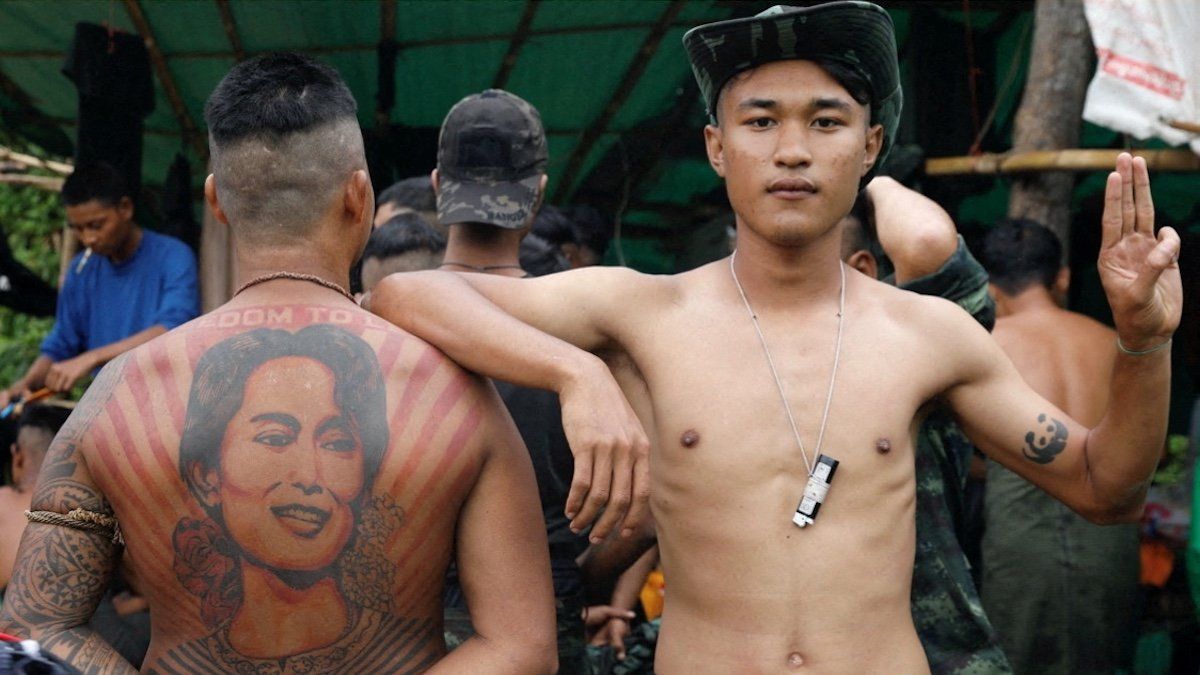After a year of rebel victories that have left Myanmar’s ruling junta on the defensive, its chairman, Gen. Min Aung Hlaing, invited ethnic minority armies to peace talks in a state television broadcast on Tuesday. The junta's invitation likely aims to divide these groups from pro-democracy fighters from the ethnic Burmese majority.
About half of Myanmar’s 21 armed ethnic militias signed onto a cease-fire agreement between 2015 and 2018 during a period of democratic reform, but heavy hitters like the United Wa State Army and Kachin Independence Army stayed in the fight, and former signatories have since returned to combat.
Divide and conquer? Myanmar has experienced civil war since 1948, but the military has historically maintained control of the fertile and densely populated lowlands, even while minorities resisted in the hills and mountains. Only when ethnic Burmese rose up with the backing of the Buddhist clergy in 1988 and 2007 did the generals cede some political power.
But after the military toppled the democratically elected government of Aung San Suu Kyi in 2021, her supporters formed the so-called National Unity Government and set up armed People’s Defense Forces. They’re believed to have up to 100,000 fighters, and the PDF has cooperated with allies from the highlands to wrest approximately 86% of Myanmar’s townships from junta control, including major border crossings.
So far, none of the major militias seem eager to take part, but we’re watching what measures of autonomy the junta might offer them to achieve a cease-fire — and to free up resources to crush the PDF.
